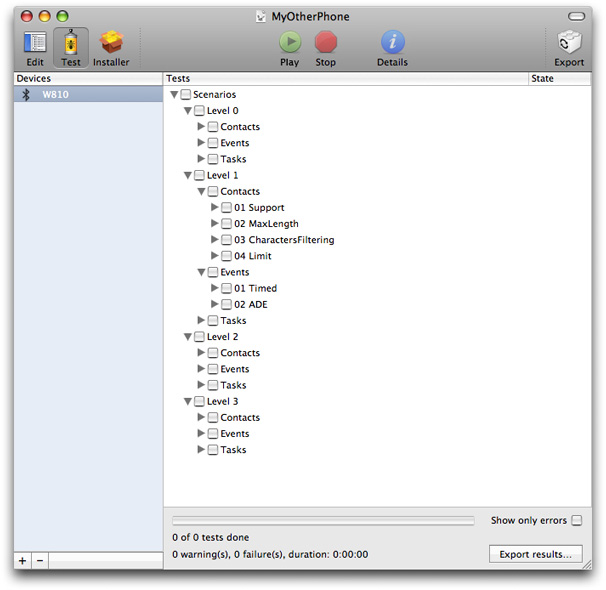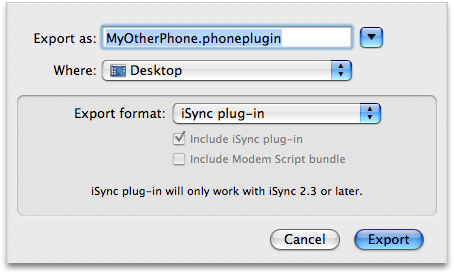Overview of Creating Plug-ins
You use iSync Plug-in Maker to build and test a plug-in, or just use iSync Plug-in Maker to test an existing plug-in. If you are building a plug-in, you create an iSync Plug-in Maker document and edit settings in it. For both new and existing plug-ins, you run a set of automated tests. When the plug-in passes all the automated tests, you export the plug-in to a package that can be loaded by iSync. Then you run a series of manual tests using Apple applications, the device, and iSync. If errors occur at any time during this process, return to the edit state to modify the plug-in and then test it again. The workflow for testing syncing between a device and iSync on a Macintosh computer is depicted in Figure 1-1.
Note: iSync Plug-in Maker creates plug-ins only for devices that support local SyncML as specified by the Open Mobile Alliance as OMA DS. See iSync SyncML Reference for more details on SyncML support.
iSync Plug-in Maker is a document-based application—each document window represents a separate iSync Plug-in Maker document, and you can edit multiple documents simultaneously. Create a new plug-in by launching iSync Plug-in Maker. An Untitled document window appears. Edit and test the plug-in by following the steps below. When done, save the iSync Plug-in Maker document by choosing Save or Save As from the File menu. To create an iSync plug-in, export the document choosing the appropriate format.
Editing
You begin editing by launching the iSync Plug-in Maker tool and clicking the Edit button in the toolbar shown in Figure 1-2. (The Edit mode is selected by default.) You use the outline view on the left to move among all the settings you need to configure a device. These device settings are described in detail in “Editing Plug-ins.”
Testing
You begin testing by clicking the Test button in the toolbar as shown in Figure 1-3. You add your device and run a number of automated test scenarios. Your device needs to be connected to your computer to run these tests. The testing phase is covered in “Testing Plug-ins.”
Exporting
Once your plug-in passes all the automated tests, you export it by clicking the Export button in the toolbar as shown in Figure 1-4. How to export a plug-in and package options are covered in “Exporting Plug-ins.”
Manual Testing
Your plug-in is not complete unless it passes manual tests that involve using Apple applications and iSync to change and sync records on the computer.
This document does not describe manual testing. Read iSync Manual Test Suite Guidefor detailed descriptions of the manual tests that you should run before shipping your plug-in.
© 2007 Apple Inc. All Rights Reserved. (Last updated: 2007-07-10)



